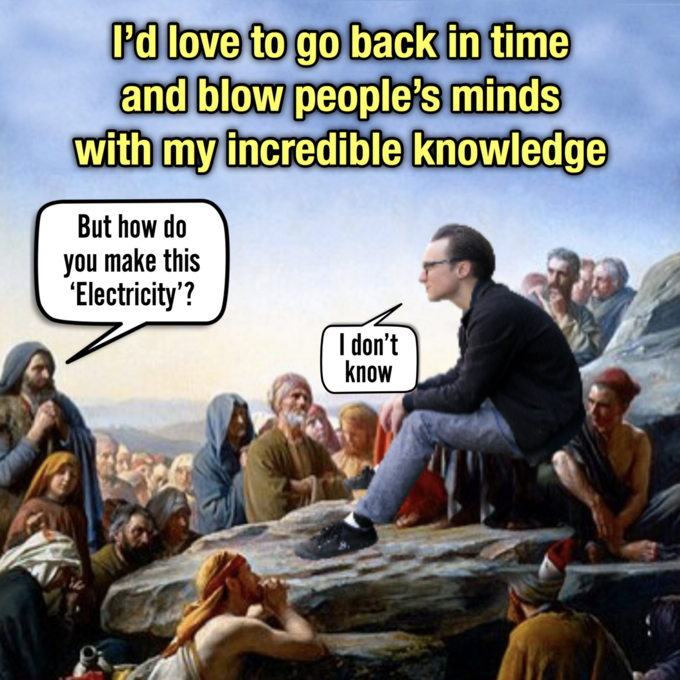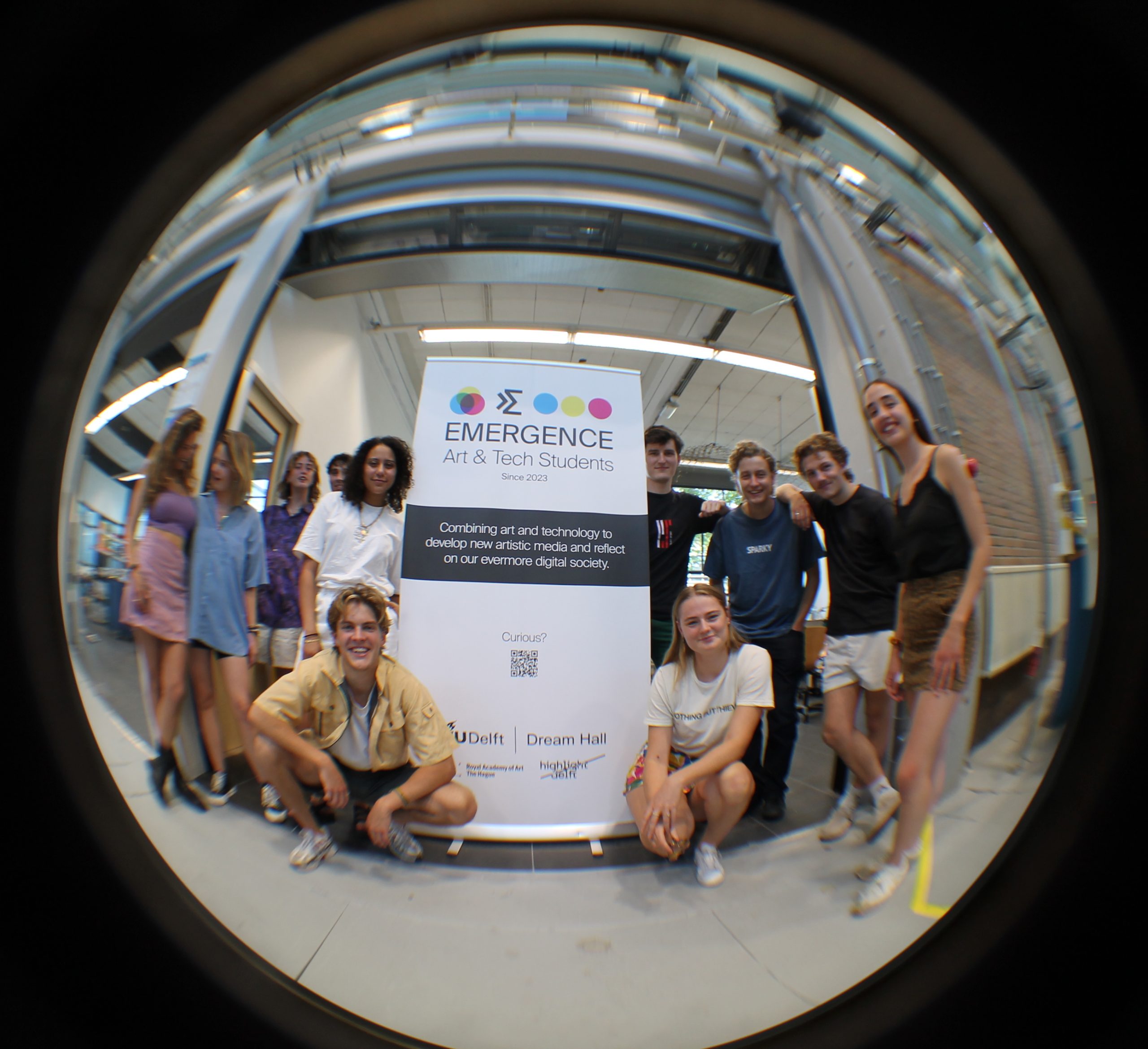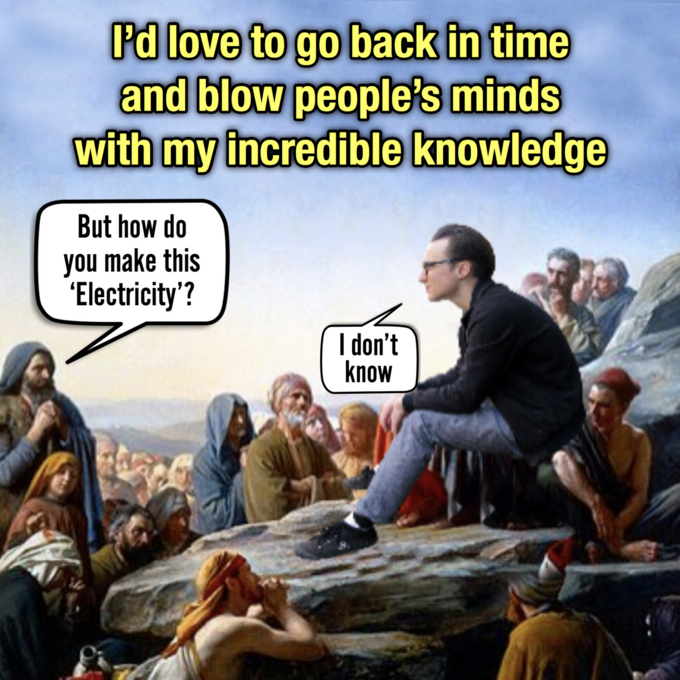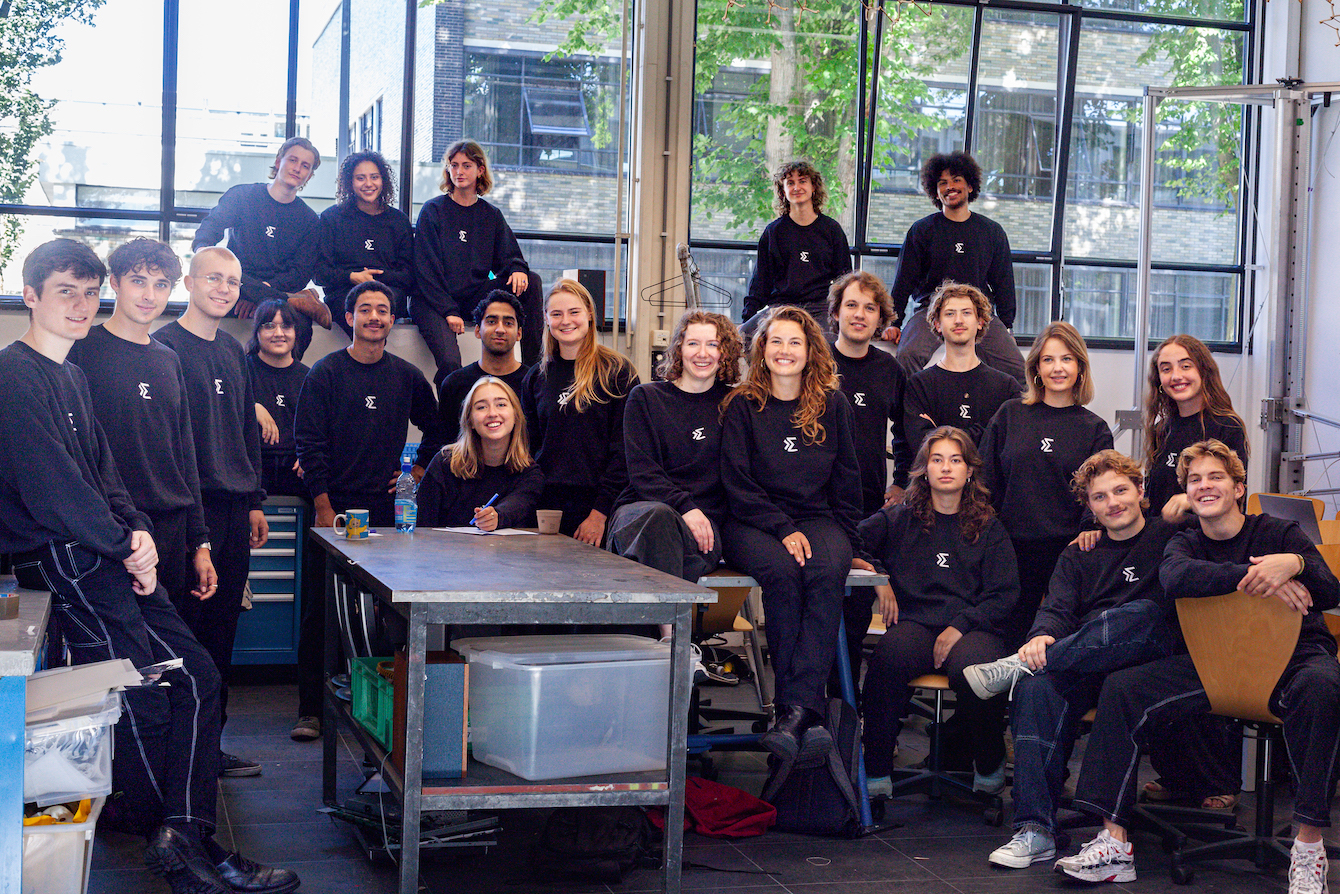Meet Emergence, the newly accredited Dream Team that explores the intersection of art, science, and engineering.
Co-founder Lars Geluk (far left): “We want to create experiences that help people reflect on our digital society and the way we use technology.” (Photo: Shreyas Sidhar)




English only
Emergence is the newest tenant of TU Delft’s acclaimed Dream Hall. Contrary to what you might expect from a team sequestered amidst factory-like machinery, the team is not building a new-fangled automobile or high-powered rocket. Emergence seeks to create ‘new media art’ that facilitates the understanding of technologies that have become ‘blackboxed’.
Besides this main project, they will also engage in side projects entailing creative, curiosity-driven research. In doing so, they will collaborate with local art schools — something that has been somewhat of a rarity at TU Delft.


Socially conscious art
In case you’re unfamiliar with the term, ‘new media art’ is a contemporary art form that implements modern technology to create immersive experiences that challenge traditional art boundaries and encourage viewer participation. New media art installations are often complex works, incorporating elements like video, sound, computer-generated graphics, and sensors.
New media art installations are apt for exploring the relationship between humans and technology, societal changes driven by digital culture, and the fusion of the physical and virtual realms of experience. A great Dutch example is Waterlicht, an award-winning installation conceived at Studio Roosegaarde in Rotterdam, and first featured at Loevestein Castle in Gelderland, before embarking on a world tour. This exhibit immerses observers in a ‘virtual flood’, giving them a visceral experience of rising sea levels due to climate change. According to Lars Geluk, Co-founder of Emergence, “such an experience has a totally different impact on people than just an IPCC report where you are presented global emissions statistics.”
“Waterlicht is an activator to create a better future. Experience the vulnerability and the power of living with water.” – Daan Roosegaarde, artist. (Video: Studio Roosegaarde)
‘Blackboxing’ was first described by sociologist Bruno Latour in the late 90s. It refers to a way of dealing with a complex system or technology. Instead of understanding all the intricate details of how it works, you just focus on its inputs and outputs, treating it like a kind of “black box” with hidden inner workings. An example of this would be a TV remote control, which we use to lackadaisically skim through channels. The remote control is like a black box – you don’t need to know how it works to use it; you just hit the intuitive buttons with your popcorn-greasy fingers and the channels flip. In the words of Latour himself: “Paradoxically, the more science and technology succeed, the more opaque and obscure they become.”


Emerging victorious
The inspiration behind the founding of Emergence came from Lars Geluk and Angela Hanna — a pair of 23-year-olds with suitable credentials. Geluk is doing a double degree in Applied Physics at TU Delft and ArtScience at the Royal Academy of Art (KABK) while Hanna is pursuing a degree in Industrial Design Engineering at TU Delft.
Hanna interned as a programme maker for the Highlight Delft festival, and Geluk interned at Studio Drift in Amsterdam. Both these organisations work in the field of art and technology. Geluk and Hanna were inspired to continue working in this field at a larger scale, so they paired up and conceived the Dream Team. They both felt that there was a wellspring of untapped potential for interaction between art, science and engineering at TU Delft, and that an official team’s entry into the Dream Hall could stimulate the required interdisciplinary cross-pollination. The team was officially accredited in early August. Geluk clarifies: “There are festivals, studios, and competitions working at this intersection. People like combining art and technology, but really bringing the expertise that is present here at a technical university into that context, that doesn’t really happen.”
Emergence managed to persuade 20 TU Delft students from various disciplines to take time out of their studies to participate in realising their vision. But the team also extended its reach beyond TU Delft. It currently collaborates with a dozen or so more students from the KABK, and has plans to work with further art schools in the future. “We really want to see where we can take our technology by collaborating with art students. We want to push them, and they want to push us,” explains Joris Kuijper, Emergence team member.
Storytellers
As a prerequisite for being accredited as a Dream Team, TU Delft states there must be a ‘clear competition-driven goal’. Emergence will enter the prestigious Prix Ars Electronica competition, the longest-running media art competition in the world. The winners will be awarded up to EUR 10,000 per category, and a prominent appearance at the acclaimed Ars Electronica Festival in Linz, Austria.
How does Emergence reconcile the competitive spirit of a Dream Team with the nature of art as a subjective endeavour, where there are no clear winners and losers? Geluk answered: “It’s enabling your story to be told to a larger audience. It’s not about the prize money. We want to show our installation at the exhibition so a larger audience can hear our story.”
The main project team plans to create a ‘new medium’ every year to serve as a basis for their art installation. This year, the team intends to create an ‘augmented reality’ technology that toes the line between real and virtual via infra-red projection. Infra-red light is of course not visible to the naked eye, and most cameras have a filter that stops them from picking it up. But they can be tuned to ‘see’ it. This allows for a projection that is invisible to the naked eye but springs into view through a camera or other device that is sensitive to infra-red light.
Pinch me
TU Delft is not the only technical university that sees potential in such interdisciplinary creative teams. MIT’s famous Media Lab in the USA (founded in 1985) regularly carries out projects at the intersection of art, science and engineering. This lab led to some of the most impactful technologies that we use today, such as touchscreens and GPS. This may be part of the reason TU Delft is keen to invest in a Dream Team that makes state-of-the-art art. Regardless of the motives, Emergence is grateful for their space in the Dream Hall. “We‘re really happy that we got this space. It’s really big of the Dream Hall to open up their doors for something like us, in quite a technical environment” Hanna exclaims.


- If you’re curious to see what installation the team comes up with using their new infra-red medium, next year Emergence will be attending the Highlight Delft festival from 15 to 17 February.
- To find out more about Emergence, or perhaps even join their ranks, visit their website.
Oscar Greenwell / Editor



Comments are closed.